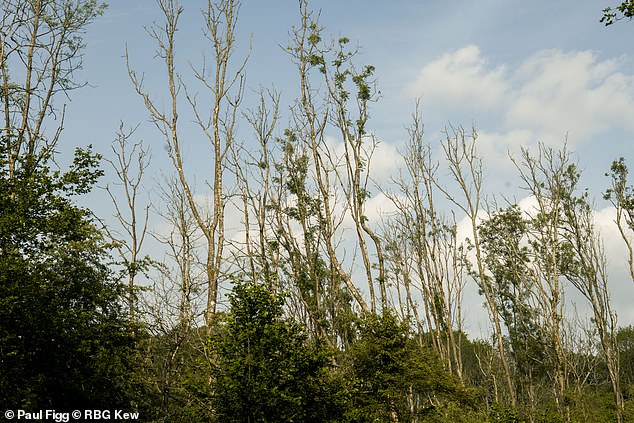
UK Ash Trees Develop Resilience, Offering Hope Against Ash Dieback Devastation
Britain’s Ash Trees Evolve Resistance to Deadly Fungus, Offering Hope
Britain’s ash trees are fighting back against the devastating ash dieback disease through natural selection, scientists report. The fungal infection, which arrived in the UK in 2012, has killed millions of trees, leaving skeletal remains across woodlands. However, a study reveals that younger ash trees are evolving genetic resistance, providing optimism for their survival.

Ash dieback in Marden Park, Surrey, a key study site for researchers (Image: Science journal)
The Threat of Ash Dieback
Ash dieback, caused by the Asian fungus Hymenoscyphus fraxineus, blocks water flow in trees, leading to wilting leaves, branch lesions, and eventual death. Initial estimates predicted 85% of UK ash trees could perish, sparking urgent government meetings. The disease’s spread costs are estimated at over £15 billion, with more than 100 million trees at risk.
Signs of Resistance Emerge
A groundbreaking study in Science analyzed DNA from ash trees in Surrey’s Marden Park Wood, comparing older trees with younger generations. Researchers identified thousands of genetic shifts linked to disease resistance, suggesting natural selection is favoring stronger trees. Dr. Carey Metheringham (QMUL) noted, “Future generations of ash should better withstand infection.”

Younger ash trees exhibit improved resistance to the fungus (Image: Science journal)
Natural Selection vs. Human Intervention
While the findings are promising, Dr. Metheringham cautioned that natural selection alone may not save ash trees—genetic diversity could be too low. Selective breeding and protecting saplings from deer may be necessary. Professor Richard Buggs (Royal Botanic Gardens, Kew) highlighted ash’s advantage over elms: abundant seedlings allow quicker adaptation. “Through millions of deaths, a resistant population is emerging,” he said.

Ash dieback’s impact in Hughenden Estate, Buckinghamshire (Image: National Trust)
Collaborative Conservation Efforts
The Woodland Trust, managing Marden Park, emphasized supporting natural regeneration. Rebecca Gosling called the research “a beacon of hope,” stressing the need to balance ecology and management. Environment Department (Defra) experts added that breeding programs could enhance resilience.
Future Strategies
Scientists are also developing gene-edited ash saplings resistant to the fungus, while stricter biosecurity measures aim to prevent future outbreaks. Although challenges remain, the study marks a turning point in saving a keystone species vital to British ecosystems.

Drone footage reveals ash dieback’s spread in Hughenden Estate (Image: National Trust)
Ash Dieback at a Glance
- Cause: Fungus Hymenoscyphus fraxineus
- Symptoms: Leaf loss, crown dieback, bark lesions
- Spread: Introduced via nursery imports; spores spread by wind
- Impact: 100M+ UK trees at risk; £15B economic cost
While ash trees face a precarious future, their evolving resistance offers a rare ecological success story—one where science and nature collaborate to combat devastation.
(Approx. 600 words)


